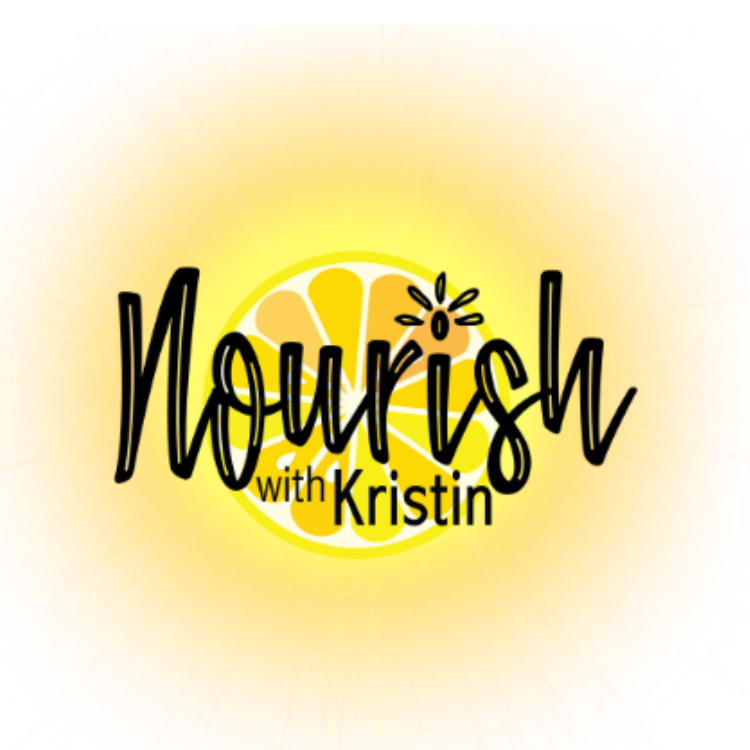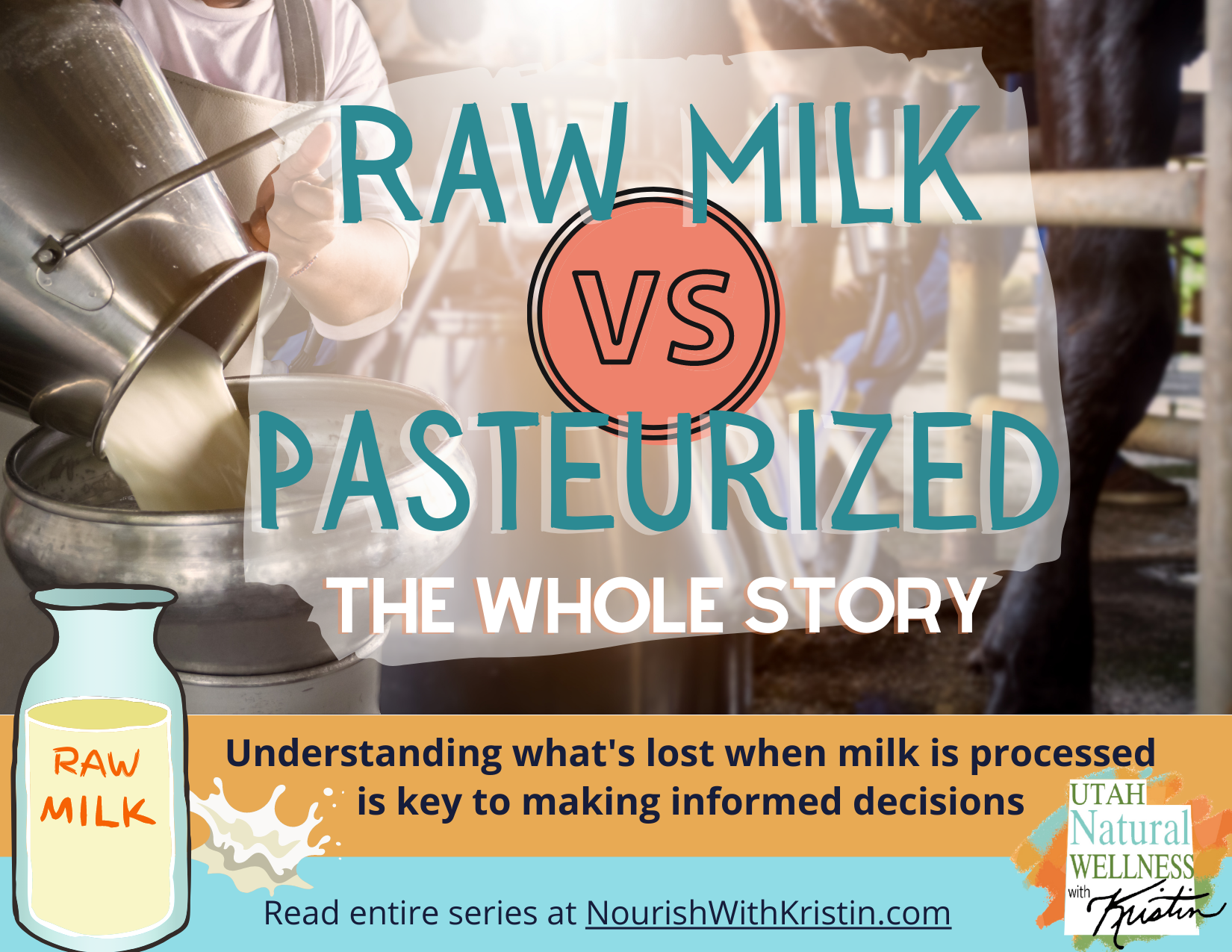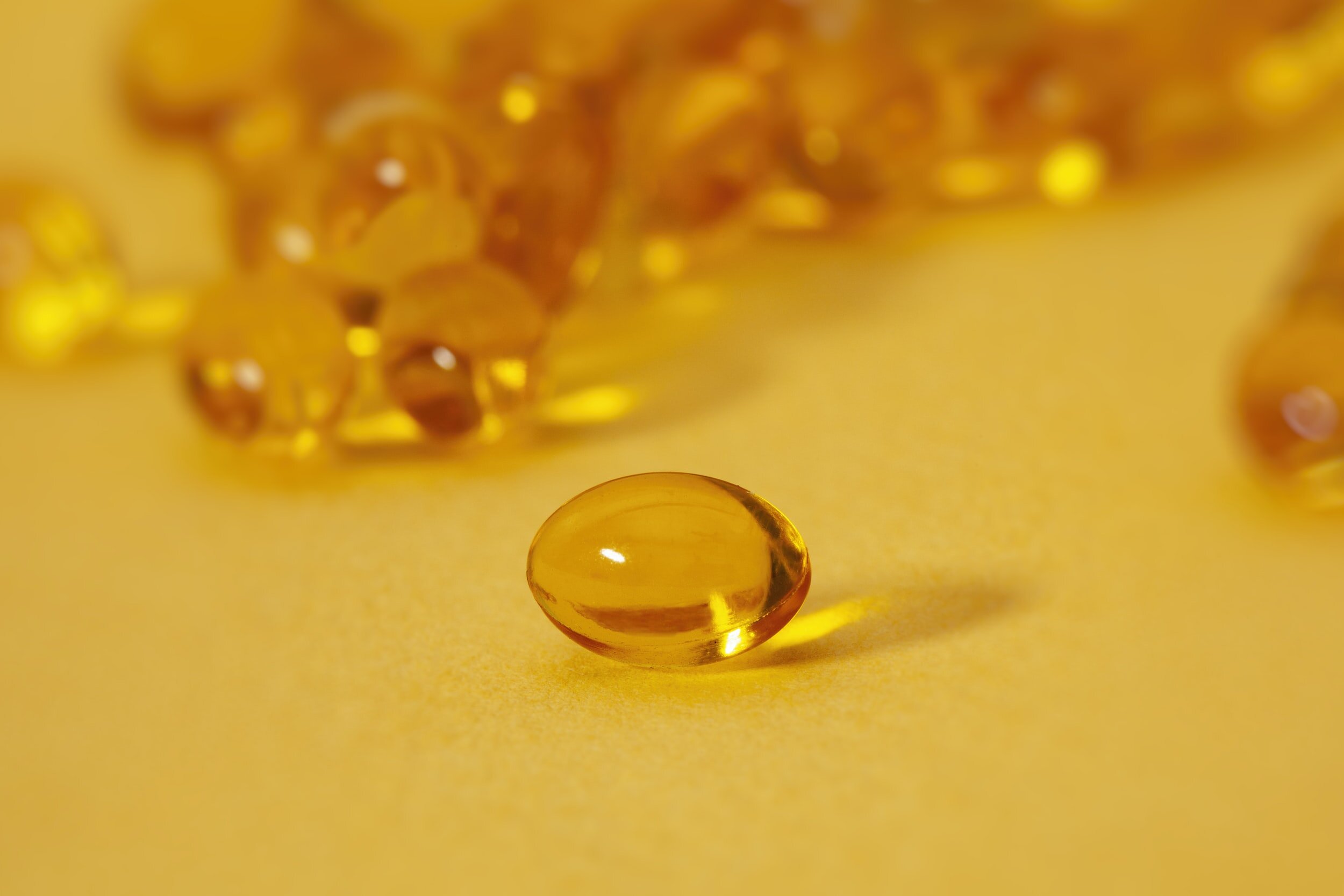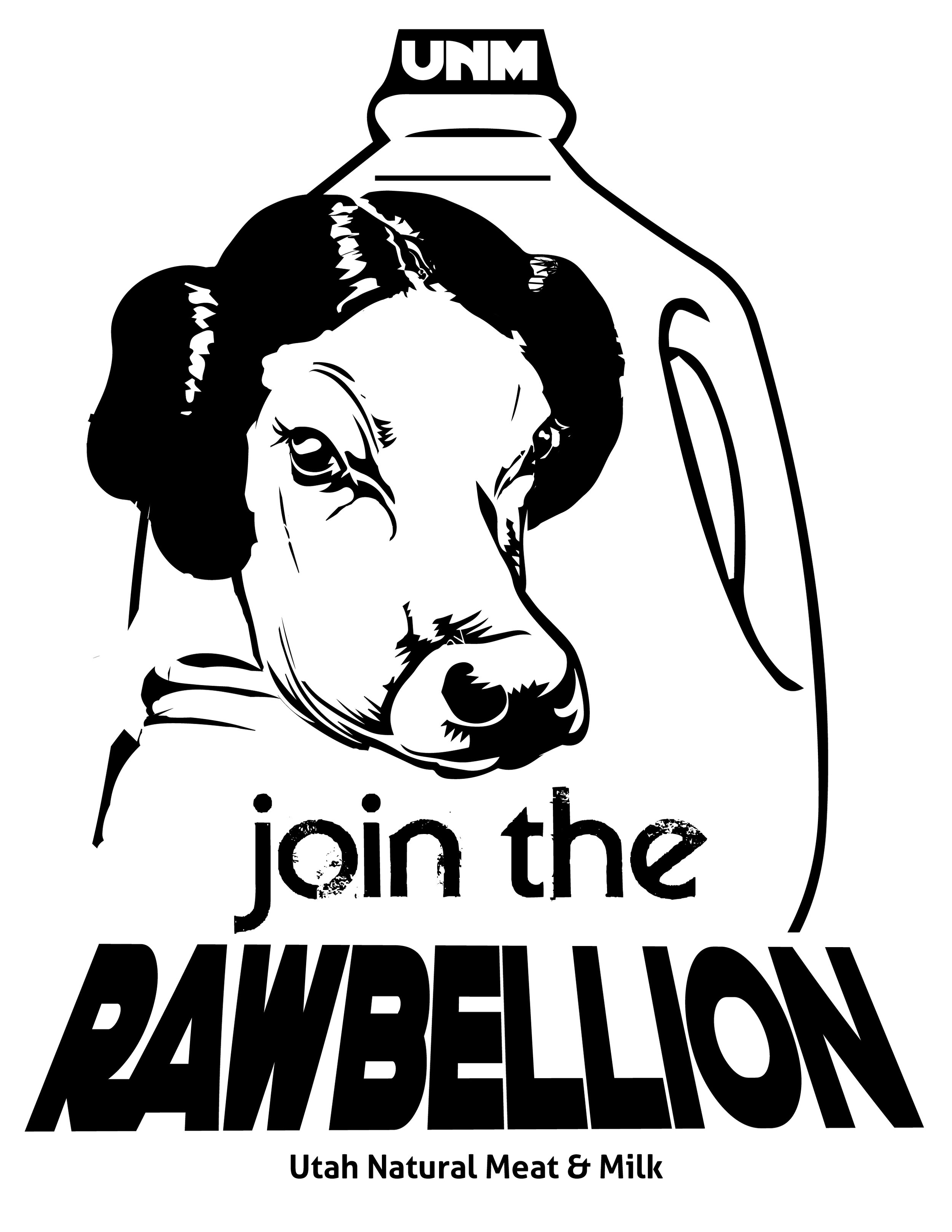Raw Milk vs. Pasteurized: The Whole Story
The Whole Story
Why is milk on your shopping list? What nutritional benefits are you looking for? Are you looking to “do a body good?” What if that jug of milk on the shelf isn’t doing what you think it is? What if it is almost an imposter…a shadow of what it could be? Though considered a basic food group, can modern milk even be called a whole food? Let’s look deeper.
We learned in the previous post, History of Dairy, why people decided to pasteurize. Now we need to look at the cost of pasteurization—specifically what did we lose in our milk? Let’s compare pasteurized milk with raw milk to see if the cost is worth the benefits.
Vitamins and Minerals
Any kid can tell you this is what we’re after, right? But getting vitamins and minerals isn’t as easy as it sounds. It is important to know that it’s not just what you eat, it’s what you absorb. Meaning, you can get the nutrients into your stomach, but can they get into your system? A couple quick definitions:
Bioavailable: in a form easily absorbed and used by the body
Denatured: processed in a way (in this case, heat) to deprive an element of its original properties or function.
Vitamins:
Raw milk contains every known fat and water soluble vitamin in their whole, bioavailable forms.
Processed milk is another story. Heat changes everything. Some vitamins are hit harder than others, but its estimated that only 50% of vitamin value remains active in milk after pasteurization.
Fat soluble vitamins (A, D, E & K) are especially unstable, particularly when heated above body temperature. This loss can exceed 66%!
Water soluble vitamins vary and range from a 38% to an 80% loss. Vitamin C exceeds 50%!
Minerals:
Once again, raw milk contains every known essential mineral, but the major players are calcium, magnesium, phosphorous, sodium and sulphur. It even has 24 vital trace minerals. All 100% bioavailable!
Now, minerals are inorganic, so they can’t be killed by heat. But many of them are altered dramatically. Calcium, one of the most essential minerals necessary for cellular function loses as much as 50% potency. Most minerals require action by enzymes to be usable by our body, and as we are about to see, this is not happening once milk is heated. So it is harder to quantify mineral depletion, but it is easy to see how they become less usable and even problematic to the body.
If you are drinking milk for the calcium, pasteurized packs less of a punch than it’s natural, raw version does!
Fortified for our Health?
Now wait, isn’t milk fortified with vitamins? Yes. Does that make up the difference? No.
Synthetic forms of vitamins aren’t easily broken down and used by the body. In nature, vitamins never occur in isolation, but in a complex network of synergistic vitamins, minerals, enzymes and cofactors that are necessary for recognition and use by the body. Synthetic versions are lab created in isolation and are either passed uselessly through the body or stored in our fat cells until the body can collect the components it needs to use them.
So why fortify?
In the 1930s, after pasteurization was commonplace, there was a rise in reports of rickets in children. After establishing a link between vitamin D deficiency and rickets, milk producers began fortifying with vitamin D and rickets nearly disappeared.
So there are benefits shown from fortification, but also pitfalls. To continue with vitamin D as our example, the form used in many multivitamins and in fortified milk is vitamin D2, a patented, synthetic drug that is less than half as effective as D3, the naturally occurring form. D2 is also linked with toxic side effects.
Science aside, lets consider good common sense. Why take out or deactivate an essential component of milk, only to add in a synthetic version of it later?
Enzymes
Back to nutritional content. All 60 (known) enzymes are found intact and fully functioning in raw milk. Some come from the milk itself, while others comes from the beneficial bacteria that grow in milk. They have a myriad of functions, but simply put they help digest milk while freeing up key minerals for us to use. There are even some that protect milk from unwanted pathogens, making it safer to drink!
Lacking enzymes is like having all the lights but they won’t light up!
Once pasteurized, there are fewer than 10% of enzymes remaining! It’s like having the fanciest Christmas lights on the block, all hung and ready to dazzle, but not having an extension cord or connections so only one strand lights up. No enzymes, no power to use the other nutrients.
Consider an interesting enzyme called phosphatase. It is absolutely essential for the absorption of calcium, and yet one method of testing to see if milk is adequately pasteurized is to measure and assure the complete destruction of phosphatase!
Proteins
Raw milk contains all 22 amino acids (the building blocks of proteins), including 8 essentials. All are 100% available.
In processed milk, 80% of milk proteins are reasonably heat stable, but the other 20% are not. This includes the amino acids lysine and tyrosine which are so altered by heat they become unusable. This compromises the whole protein complex, making it less available for muscle building and tissue repair.
Forget the cookies, there’s already sugar in your milk! The question is, can you handle it?
Sugars: the sad story of lactose
Milk itself contains a fair amount of sugar, about 5% (Human milk is 7%). But milk sugar, called lactose, does not have the same harmful effects in the body that regular sugar, or sucrose, does. It is more slowly absorbed into the blood stream without stimulating a dramatic insulin response from the pancreas. In an earlier post we discussed lactase-persistence: a genetic ability that developed in our ancestors to allow us to use lactase (an enzyme) to break down milk sugars.
Well, once you heat the milk up, the story changes completely. Heat breaks the lactose down into something smaller called beta-lactose that is absorbed more quickly into the blood stream, causing spikes in blood sugar accompanied by crashes. This continued cycle can contribute to the onset of diabetes and obesity.
While we are discussing it, you often hear that people are “lactose intolerant.” This is accompanied by all kinds of miserable ailments. In many cases, it is simply the absence of lactase, the sugar-digesting enzyme that is destroyed by pasteurization, that causes this. Some people find their upset stomach, bloating, gas and other tummy troubles go away when they drink milk raw where lactose is still present.
Fun fact: Are you buying Lactose Free milk at the store? It’s actually regular pasteurized milk they’ve added lactase back into. So let’s get this straight: kill the lactase, have problems with lactose, add lactase back in and mark it up as a specialized health drink!
Some people forego drinking milk altogether because lactose is hard to digest. Consider that a steak is hard to eat without a fork and a knife, but that doesn’t stop people from ordering the t-bone. Likewise, if lactose is accompanied by lactase, the body has the tools it needs to break it down.
Fat
Maybe the only word worse in our modern vocabulary than sugar is fat. It turns out that healthy fats are essential to our body’s vitality. Our brain is comprised of and feeds on fat. Saturated fats play a number of key roles in our bodies: from construction of cell membranes and key hormones to providing energy storage and padding for delicate organs, to serving as a vehicle for important fat-soluble vitamins. Raw milk contains all 18 fatty acids, both saturated and unsaturated, and all metabolically available. All 18, but especially the 10 essential fats, are altered by heat.
Keep in mind that Lipase, the enzyme present in raw milk that helps break down fat into usable amino acids, is killed after heated.
For those looking to bypass the fat issue altogether by buying skimmed milk, read this. (Post coming soon)
Quality you can taste!
I get asked all the time what Raw Milk tastes like. Some people say it tastes like childhood. I think it tastes clean and fresh and slightly sweet. If you’ve never had it, the first thing you notice is how creamy it is. Remember, nothing skimmed! Even whole milk at the store is skimmed! The real difference is hard to put your finger on. But once you get used to drinking whole, raw milk and then have a glass of pasteurized, it tastes watery and “flat.”
That taste is something to take seriously. If the cows are healthy, fed grass, and the milk handled correctly, the milk tastes delicious. If something is “off” in the flavor…then something is off in the process. Raw milk is honest. This is why it’s good to know where your milk comes from and how the cows are cared for. This is a far cry from the faceless white stuff trucked in from miles and miles away treated to last for as long as possible on supermarket shelves!
The bottom line…
When looking at nutritional profiles and the effects on the body, one could claim that raw milk and pasteurized milk are completely different substances and should be classified as such! Nutrients are interconnected and need each other to carry out their many functions. You pull one thread and the entire tapestry begins to fray. Even with attempts to mend holes with fortification and erase off-putting tastes with additives, a jug of processed, dead milk appears empty at best, and harmful at worst.
Where can I buy Raw Milk?
Weston A Price Foundation maintains an awesome Real Milk Finder. Simply scroll to your state to find raw milk near you!
If, like me, you call the Wasatch Front home you are in luck! Utah Natural Meat and Milk has what I think is the best tasting, highest quality raw cow AND goat milk you can get. Their commitment to cleanliness exceeds even strict state standards and they treat their animals with incredible care. The result is a bright, creamy milk that is never skimmed or altered. Filtered, chilled, bottled. That’s it! Come and get it…and tell them I sent you!
Thirsty for more?
Read other posts in my Raw Milk series!
7 Reasons to drink Raw Milk (and 2 Reasons NOT to)
Continue the Discussion…
Does milk fit into your personal eating plan and if so, how? Are you sensitive or even allergic to dairy? Questions like these and more can be explored with the help of a nutrition therapist…like me! I specialize in customizing diets for your needs and lifestyles to accomplish your goals. Book a free consultation today to see if I can help you use food to feel better.










